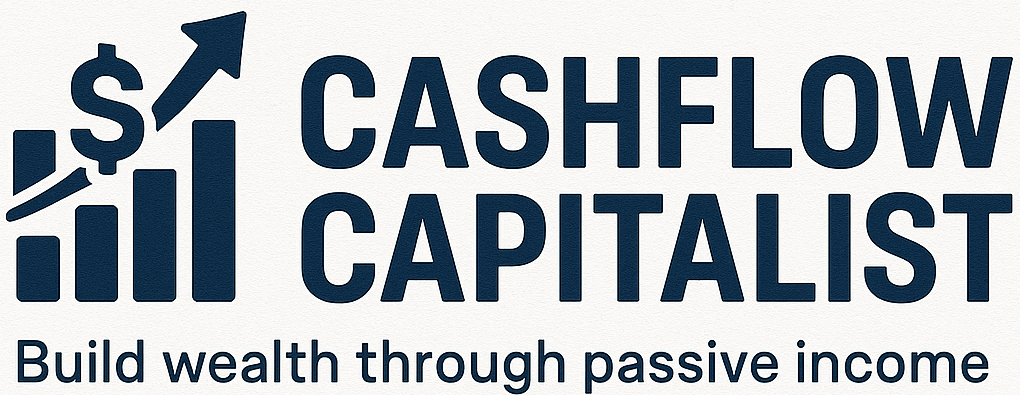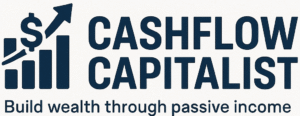Best High-Yield Stocks on the TSX Right Now: Top Dividend Payers for Canadian Investors in 2025
Canadian investors looking for steady income can find great options on the Toronto Stock Exchange (TSX). The TSX has high-yield dividend stocks that promise both solid cash flow and growth over time.

In 2025, Canada’s market is strong, thanks to consumer spending and AI investments. Stocks like Sun Life Financial and Royal Bank of Canada are worth a look. They offer yields of 4.13% and 3.00%, respectively. For more on top Canadian dividend stocks, check out Cashflow Capitalist.
These dividend payers are great for those wanting a steady income. They’re perfect for building a portfolio that brings in monthly returns.
Key Takeaways
- Top dividend stocks on the TSX offer yields between 3-8%.
- Key sectors for dividend investors include utilities, real estate, energy, and finance.
- Royal Bank of Canada and Enbridge Inc. are notable for their competitive dividend yields.
- Fortis Inc. is a dividend aristocrat with a history of raising payouts.
- Canadian market remains resilient due to strong consumer spending and AI investments.
The Value of Dividend Investing in Canada’s Current Economic Climate
Canada’s economy is changing, making dividend investing more appealing. It offers stability and income. Dividend stocks are key for a balanced portfolio.
Current Market Conditions Affecting Dividend Stocks
The Canadian market has seen ups and downs. Interest rates and global trends have played a part. Yet, dividend stocks have shown strength, providing steady returns.
Recent data shows the Morningstar Canada Dividend Yield Focus Index grew by 7.86% in the quarter. This outdid the broader market. It shows dividend stocks can be a safe bet in uncertain times.

Why High-Yield Stocks Matter for Canadian Investors
High-yield stocks are great for Canadian investors. They offer income and growth. For those aiming for high returns, TSX-listed high-yield dividend stocks are a good choice.
For more on top dividend-paying stocks on the TSX, check out Cashflow Capitalist.
| Stock | Dividend Yield | Sector |
|---|---|---|
| Stock A | 4.5% | Financial |
| Stock B | 5.2% | Energy |
| Stock C | 3.8% | Telecom |
Adding high-yield stocks to a portfolio can give a steady income. This is vital when the economy is uncertain.
Key Metrics for Evaluating High-Yield TSX Stocks
To find the best high-yield TSX stocks, investors must look at several important indicators. They need to analyze various financial metrics. These metrics show if a stock can give steady returns.
Understanding Dividend Yield vs. Dividend Growth
Two key metrics are dividend yield and dividend growth. Dividend yield is the annual dividend payment per share divided by the stock’s price. It shows the return on investment. Dividend growth is how fast a company’s dividend payments increase. It shows if the company can keep rewarding shareholders.
A stock with a high dividend yield might seem good. But if the dividend isn’t growing, it could mean the company is not doing well. On the other hand, a stock with a lower yield but growing dividends might be better in the long run.
Assessing Dividend Sustainability and Payout Ratios
To see if a company’s dividend is sustainable, look at its payout ratio. This ratio shows how much of the earnings are paid out as dividends. A high payout ratio might mean the dividend is not sustainable. A lower ratio suggests the company can keep or increase its dividend.
| Company | Payout Ratio (%) | 5-Year Dividend Growth Rate (%) |
|---|---|---|
| National Bank of Canada | 44.5 | 10 |
| Royal Bank of Canada | 42.1 | 8.5 |
| Toronto-Dominion Bank | 45.6 | 9.2 |
Analyzing Cash Flow Stability and Company Fundamentals
Investors should also check a company’s cash flow stability and overall health. A stable cash flow helps keep dividend payments steady. Important metrics include the cash flow coverage ratio and the debt-to-equity ratio. These show a company’s financial health and debt management.

By looking at these metrics, investors can choose high-yield TSX stocks wisely for their portfolios.
Best High-Yield Stocks TSX: Top Performers for 2025
In 2025, the TSX has many high-yield stocks across different sectors. These include financial, energy, telecom, and real estate. Investors looking to boost their income should focus on these top performers.
Top Financial Sector Dividend Payers
The financial sector is key to the TSX. Banks and financial institutions here offer attractive dividend yields. The Bank of Nova Scotia and Royal Bank of Canada are notable examples.
Bank of Nova Scotia (BNS)
Scotiabank, or the Bank of Nova Scotia, has a long history of consistent dividends. It has a strong presence in Canada and internationally, making it a stable income source for investors.
Royal Bank of Canada (RY)
Royal Bank of Canada is a major player in Canadian banking. It’s known for its financial health and commitment to dividends. RY has a history of stable and growing dividends, appealing to income investors.
Other Notable Financial Dividend Stocks
Besides BNS and RY, Toronto-Dominion Bank (TD) and Canadian Imperial Bank of Commerce (CM) are notable. These banks offer attractive yields and have a history of stable dividend payments.
| Bank | Dividend Yield (%) | Payout Ratio (%) |
|---|---|---|
| Bank of Nova Scotia (BNS) | 4.5 | 55 |
| Royal Bank of Canada (RY) | 4.2 | 50 |
| Toronto-Dominion Bank (TD) | 4.0 | 48 |
| Canadian Imperial Bank of Commerce (CM) | 4.8 | 60 |
Energy Sector Dividend Champions
The energy sector is a big part of the TSX. Companies like Enbridge, TC Energy, Pembina Pipeline, and Canadian Natural Resources offer high yields. These are worth exploring for income.
Enbridge (ENB)
Enbridge is a leading energy company with diverse assets. It’s known for stable dividend payments and increasing its yield over time.
TC Energy (TRP)
TC Energy has a vast network of pipelines and power facilities. It provides a stable cash flow. TRP has a strong dividend payment history, making it a reliable income source.
Pembina Pipeline (PPL)
Pembina Pipeline focuses on midstream operations. It offers a competitive dividend yield and has a history of stable growth.
Canadian Natural Resources (CNQ)
Canadian Natural Resources explores and produces oil and gas. It offers a significant dividend yield but can be more volatile than pipeline companies.

For more information on Canadian dividend stocks, visit this resource. It explores other top dividend payers.
Telecom Giants with Stable Dividends
The telecom sector is known for stability and attractive yields. BCE Inc. and Telus Corporation are major players here.
BCE Inc. (BCE)
BCE Inc. is Canada’s largest telecom company. It offers wireless, internet, and TV services. BCE has a history of consistent dividends, making it a stable income source.
Telus Corporation (T)
Telus Corporation is another major telecom company in Canada. It’s known for strong financial performance and dividend payments. T has a history of stable and growing dividends, appealing to income investors.
Real Estate Investment Trusts (REITs) with Attractive Yields
REITs are popular for income due to their dividend distribution requirement. Several Canadian REITs offer attractive yields.
Top Canadian REITs for Dividend Income
Top Canadian REITs include RioCan REIT, Chartwell Retirement Residences, and Granite REIT. They offer stability and attractive yields.
Risk Factors in REIT Dividend Investing
While REITs offer attractive yields, they come with risks. Interest rate changes and property market fluctuations are key concerns. Investors should carefully assess these risks before investing.
Strategic Approaches to Building a High-Yield Dividend Portfolio
To build a high-yield dividend portfolio, you need a smart plan. Canadian investors should think about several key things. This helps meet their financial goals.
Balancing Yield with Growth
Finding the right mix of yield and growth is key in dividend investing. High-yield stocks are tempting, but it’s also important to pick companies with a history of dividend growth. This mix ensures steady income and growth in your portfolio. Look for stocks with a good track record of dividend increases.
Sector Diversification for Stability
Sector diversification is essential for a stable dividend portfolio. Spreading investments across sectors like financials, energy, telecom, and real estate reduces risk. This way, you get a steady income, even if one sector has a bad time.

Monthly Dividend Payers for Consistent Income
Investing in monthly dividend payers offers a steady income. This is great for those who need regular cash from their investments. Some REITs and financial companies pay dividends monthly, making income more predictable.
Tax Considerations for Canadian Dividend Investors
Tax considerations are very important for Canadian dividend investors. The tax on dividend income can affect your returns. It’s important to know how investing in dividend stocks affects taxes in accounts like TFSAs and RRSPs. Always talk to a tax expert to make your dividend strategy tax-friendly.
Conclusion: Maximizing Income with TSX Dividend Stocks in 2025
Canadian investors looking to boost their income with TSX dividend stocks in 2025 have many options. The economic situation in Canada is great for dividend investing. Top dividend companies offer good yields and growth chances.
To make money from dividend stocks in Canada in 2025, pick the best companies. Look at financial, energy, telecom, and REIT sectors for high yields. It’s important to choose wisely, diversify, and manage your portfolio well.
Investors should mix yield with growth, spread out across sectors, and think about taxes. The best dividend stocks in Canada are stable and growing. With a smart plan, Canadian investors can make good money from TSX dividend stocks in 2025.
FAQ
What are the best high-yield stocks on the TSX for 2025?
For 2025, the TSX has top dividend payers in various sectors. These include financials, energy, telecom, and real estate. Bank of Nova Scotia, Royal Bank of Canada, and Enbridge are some examples. Also, TC Energy, BCE, and Telus are great choices.
Why are high-yield dividend stocks attractive to Canadian investors?
Canadian investors find high-yield dividend stocks appealing. They offer a stable income source and may have lower volatility than growth stocks. This makes them valuable in today’s economy.
How do I evaluate the sustainability of a dividend stock?
To check if a dividend stock is sustainable, look at its dividend payout ratio. Also, analyze the company’s cash flow stability. And, examine its financial health and fundamentals.
What is the difference between dividend yield and dividend growth?
Dividend yield shows the annual dividend payment per share compared to the stock’s price. It indicates the return on investment. Dividend growth, on the other hand, shows how a company’s dividend payments increase over time. It reflects the company’s ability to grow income for shareholders.
How can I build a diversified high-yield dividend portfolio?
To create a diversified portfolio, balance yield with growth. Spread investments across financials, energy, telecom, and real estate. Also, consider monthly dividend payers for steady income.
What are the tax implications of dividend investing in Canada?
In Canada, dividend income is taxed but gets preferential treatment compared to interest income. Investors should think about the tax impact of their dividend investments. Using tax-efficient accounts like TFSAs or RRSPs can help.
Are REITs a good option for dividend investors?
REITs can be attractive for dividend investors. They are required to distribute a lot of their income to shareholders, often leading to high dividend yields. But, investors should be aware of the risks in the real estate market.
How do dividend aristocrats differ from other dividend stocks?
Dividend aristocrats have a long history of increasing their dividend payments. They are known for being reliable dividend payers. They offer income and the chance for long-term growth.
What role do dividend ETFs play in a dividend investment strategy?
Dividend ETFs offer a mix of dividend-paying stocks. They make it easy to invest in many companies across different sectors and geographies. This can reduce risk and increase income stability.




